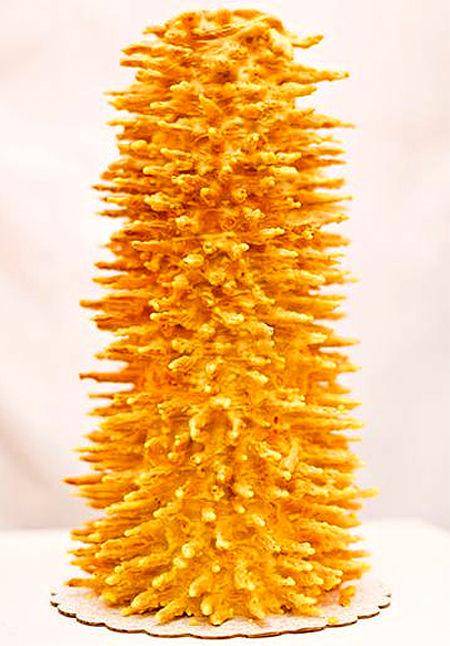
Return
Trees are important Lithuanian pagan significance, a land of great
forests such as the Bialowies, where trees support life. The significance
of these trees are reflected in the Lithuanian pagan culture in its
Baum kuchen or "sokotis" cake. Not only does the cake look like trees,
made especially to look like real trees, but if the cake is cut, the
Baum kuchen cake will display annular rings.
One can guess the attitude of the Lithuanian peope as they watched
the German sodiers of OberOst exploiting the forests:
"A network of roads and railroads was built through the forest, while a
'small army of POWs' and press-ganged natives provided labor: one official
mentioned 5,000 workers in early 1916. Trees were tapped for sap and resins,
yielding valuable chemicals, while burning produced charcoal. Army sawmills
supplied their own needs, as well as more wood for the Western Front.
Exploitation went beyond purely military needs, as lumber was also sold to
private German firms. The best wood was sent to the Reich, where cellolose
timber supplied production of gunpowder and explosives, such as nitroglycerine,
and paper manufacture. Quantities being cut were so large that eventualy military
reports went over to merely noting the value of shipments in marks. Lauded
'scientific forestry' was less in evidence, as one official confessed, in
face of ravenous orders, though Ludendorff later denied strip-cutting.
For kilometers to either side of rivers and roads, forests
were cut down. Areas lay waste, a stubble of stumps or dead trees killed by
being tapped to drain away their valuable sap. Natives looked with dismay
at clear-cut wastes.
"War Land on the Eastern Front: Culture, National Identity
and German Occupation in World War I", Vejas Gabriel Liulevicius, pp. 72, 73
© Copyright 2006 - 2019
© Copyright 2006 - 2018
The Esther M. Zimmer Lederberg Trust
 Website Terms of Use
Website Terms of Use